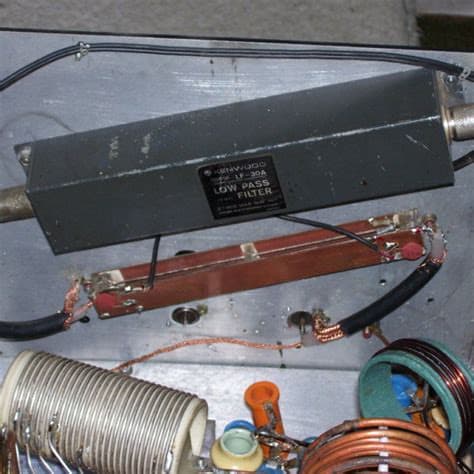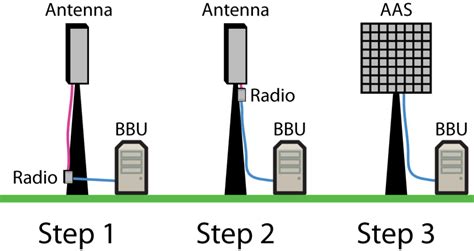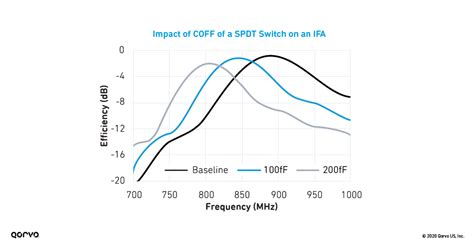Introduction to 5G Antenna Tuning
5G wireless technology promises to deliver faster data speeds, lower latency, and the ability to connect more devices than ever before. However, to fully realize the potential of 5G networks, devices must be equipped with antennas that are optimized for the specific frequency bands and use cases of 5G. This is where 5G antenna tuning comes in.
What is 5G Antenna Tuning?
5G antenna tuning is the process of adjusting the physical and electrical properties of an antenna to optimize its performance for a specific frequency band and application. This can involve changes to the antenna’s size, shape, material, and feed structure, as well as the use of matching networks and other components to improve impedance matching and reduce signal loss.
The goal of 5G antenna tuning is to maximize the antenna’s efficiency, gain, and bandwidth, while minimizing its size and cost. This is especially important for mobile devices and Internet of Things (IoT) applications, where space is limited and power consumption is a key concern.
5G Frequency Bands and Their Challenges
One of the key challenges of 5G antenna design is the wide range of frequency bands that 5G networks can operate in. These bands can be broadly divided into three categories:
| Band | Frequency Range | Characteristics |
|---|---|---|
| Low-band | < 1 GHz | Long range, good building penetration |
| Mid-band | 1-6 GHz | Balance of range and capacity |
| High-band | > 24 GHz | High capacity, short range, limited penetration |
Each of these bands presents its own challenges for antenna design and tuning. Low-band antennas must be large enough to achieve good efficiency and gain, while high-band antennas must be small and highly directional to overcome the short range and limited penetration of millimeter-wave signals.
Sub-6 GHz Antenna Tuning
In the sub-6 GHz frequency range, which includes both low-band and mid-band 5G, antenna tuning typically involves the use of multi-band antennas that can cover multiple frequency bands with a single radiating element. These antennas often use techniques such as aperture coupling, capacitive loading, and parasitic elements to achieve wide bandwidth and good efficiency across multiple bands.
One common approach to sub-6 GHz antenna tuning is the use of matching networks, which can be used to transform the impedance of the antenna to match the impedance of the transceiver. This can help to reduce signal reflections and improve overall system efficiency.
Millimeter-Wave Antenna Tuning
In the millimeter-wave frequency range, which is used for high-band 5G, antenna tuning becomes even more challenging due to the short wavelength and high path loss of the signals. At these frequencies, antennas must be highly directional and tightly integrated with the transceiver to minimize losses.
One common approach to millimeter-wave antenna tuning is the use of Phased array antennas, which consist of multiple radiating elements that can be individually phase-shifted to steer the antenna beam in a specific direction. This allows the antenna to dynamically adapt to the changing environment and maintain a high-quality link even in the presence of obstacles and interference.

Antenna Tuning Techniques for Mobile Devices
Mobile devices such as smartphones and tablets present unique challenges for 5G antenna tuning due to their small size, limited battery life, and need for multi-band operation. Some common techniques used for mobile device antenna tuning include:
Impedance Matching Networks
Impedance matching networks are used to transform the impedance of the antenna to match the impedance of the transceiver, typically 50 ohms. This can be achieved using lumped elements such as capacitors and inductors, or distributed elements such as transmission lines and stubs.
| Component | Function |
|---|---|
| Capacitors | Provide capacitive reactance for impedance matching |
| Inductors | Provide inductive reactance for impedance matching |
| Transmission Lines | Transform impedance through length and characteristic impedance |
| Stubs | Provide reactive loading to fine-tune impedance |
The design of impedance matching networks requires careful simulation and optimization to achieve the desired performance across all frequency bands of interest.
Antenna Diversity
Antenna diversity is a technique that uses multiple antennas to improve the reliability and performance of the wireless link. This can be achieved through techniques such as spatial diversity, polarization diversity, and pattern diversity.
| Diversity Technique | Description |
|---|---|
| Spatial Diversity | Uses multiple antennas separated by a certain distance |
| Polarization Diversity | Uses antennas with orthogonal polarizations |
| Pattern Diversity | Uses antennas with different radiation patterns |
By combining the signals from multiple antennas, the overall system performance can be improved in the presence of multipath fading and other channel impairments.
Beamforming
Beamforming is a technique that uses an array of antennas to focus the radiated energy in a specific direction. This can be achieved through techniques such as analog beamforming, digital beamforming, and hybrid beamforming.
| Beamforming Technique | Description |
|---|---|
| Analog Beamforming | Uses phase shifters to steer the antenna beam |
| Digital Beamforming | Uses digital signal processing to shape the antenna beam |
| Hybrid Beamforming | Combines analog and digital beamforming techniques |
Beamforming can help to improve the signal-to-noise ratio (SNR) and reduce interference in the wireless channel, leading to higher data rates and more reliable communication.

Antenna Tuning Techniques for IoT Devices
IoT devices such as sensors, actuators, and smart appliances have their own unique requirements for 5G antenna tuning. These devices are often battery-powered and must operate for long periods of time without maintenance or replacement. They also typically have limited processing power and memory, which can make it challenging to implement complex antenna tuning algorithms.
Some common techniques used for IoT device antenna tuning include:
Compact Antenna Design
IoT devices often have limited space for antennas, which can make it challenging to achieve good performance across all frequency bands of interest. Compact antenna designs such as patch antennas, loop antennas, and monopole antennas can help to minimize the size of the antenna while still providing good efficiency and gain.
| Antenna Type | Description |
|---|---|
| Patch Antenna | Uses a metal patch over a ground plane to radiate energy |
| Loop Antenna | Uses a loop of wire or metal to radiate energy |
| Monopole Antenna | Uses a single straight wire or rod to radiate energy |
The choice of antenna type depends on factors such as the frequency band, the available space, and the desired radiation pattern.
Adaptive Impedance Matching
Adaptive impedance matching is a technique that uses tunable components such as variable capacitors or MEMS switches to dynamically adjust the impedance of the antenna to match the impedance of the transceiver. This can help to compensate for changes in the environment or the device itself, such as variations in temperature or humidity.
| Tunable Component | Description |
|---|---|
| Variable Capacitor | Provides variable capacitance for impedance matching |
| MEMS Switch | Provides low-loss switching for impedance matching |
Adaptive impedance matching can help to improve the efficiency and reliability of the wireless link, especially in challenging environments.
Energy Harvesting Antennas
Energy harvesting antennas are designed to capture ambient RF energy from sources such as TV and radio broadcasts, cellular networks, and Wi-Fi access points. This energy can be used to power the IoT device, reducing or eliminating the need for batteries or other power sources.
| Energy Harvesting Technique | Description |
|---|---|
| Rectenna | Uses a rectifying antenna to convert RF to DC power |
| Piezoelectric Generator | Uses mechanical vibration to generate electrical power |
| Thermoelectric Generator | Uses temperature gradients to generate electrical power |
Energy harvesting antennas can help to extend the lifetime and reduce the maintenance requirements of IoT devices, especially in remote or hard-to-reach locations.

Challenges and Future Directions
Despite the many advances in 5G antenna tuning techniques, there are still significant challenges that must be addressed to fully realize the potential of 5G networks. Some of these challenges include:
-
Interference Management: As the number of devices and networks operating in the same frequency bands increases, interference becomes a major concern. Techniques such as beamforming, interference cancellation, and dynamic spectrum access will be critical for managing interference and ensuring reliable communication.
-
Energy Efficiency: The power consumption of 5G devices, especially those operating in the millimeter-wave frequency range, is a major challenge. Techniques such as adaptive power control, sleep mode optimization, and energy harvesting will be important for improving the energy efficiency of 5G devices.
-
Security and Privacy: The increased connectivity and data sharing enabled by 5G networks also raises concerns about security and privacy. Techniques such as encryption, authentication, and access control will be essential for protecting sensitive data and preventing unauthorized access.
As 5G networks continue to evolve and expand, new antenna tuning techniques and technologies will be needed to address these challenges and enable new use cases and applications. Some potential future directions for 5G antenna tuning include:
-
Intelligent Antenna Systems: The use of machine learning and artificial intelligence techniques to dynamically optimize antenna performance based on real-time channel conditions and user requirements.
-
Reconfigurable Antennas: The use of advanced materials and structures to create antennas that can dynamically change their shape, size, and other properties to adapt to changing environments and use cases.
-
Integrated Antenna-Transceiver Designs: The co-design of antennas and transceivers to achieve tighter integration and improved performance, especially in the millimeter-wave frequency range.
FAQs
What is the difference between sub-6 GHz and millimeter-wave 5G?
Sub-6 GHz 5G refers to the frequency bands below 6 GHz, which offer a balance of coverage and capacity. Millimeter-wave 5G refers to the frequency bands above 24 GHz, which offer very high capacity but limited coverage and building penetration.
Why is antenna tuning important for 5G devices?
Antenna tuning is important for 5G devices because it helps to optimize the performance of the antenna for the specific frequency bands and use cases of 5G. This can help to improve the efficiency, gain, and bandwidth of the antenna, while minimizing its size and cost.
What are some common techniques used for 5G antenna tuning?
Some common techniques used for 5G antenna tuning include impedance matching networks, antenna diversity, beamforming, compact antenna design, adaptive impedance matching, and energy harvesting antennas.
What are some of the challenges and future directions for 5G antenna tuning?
Some of the challenges for 5G antenna tuning include interference management, energy efficiency, and security and privacy. Some potential future directions include intelligent antenna systems, reconfigurable antennas, and integrated antenna-transceiver designs.
How can I learn more about 5G antenna tuning?
To learn more about 5G antenna tuning, you can consult technical literature such as research papers, conference proceedings, and industry standards. You can also attend workshops, webinars, and conferences focused on 5G technology and antenna design. Additionally, many universities and online learning platforms offer courses and certifications in wireless communications and antenna theory.

No responses yet